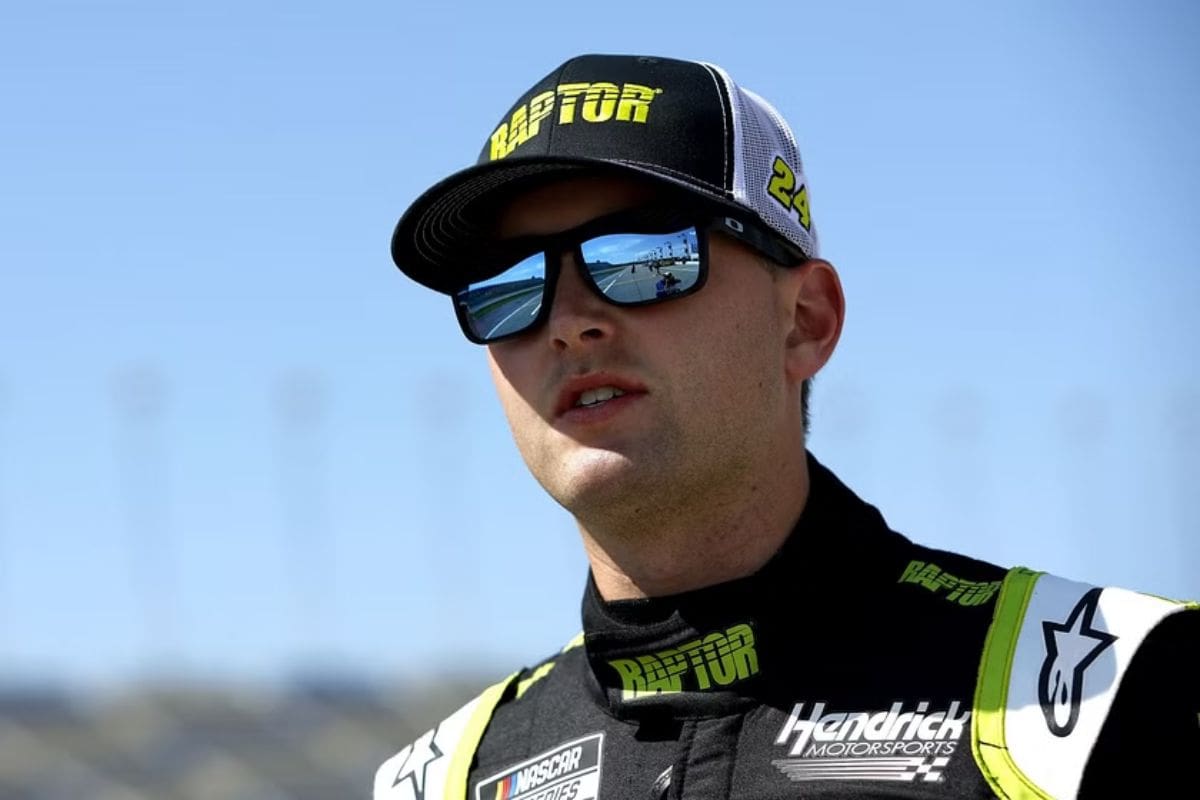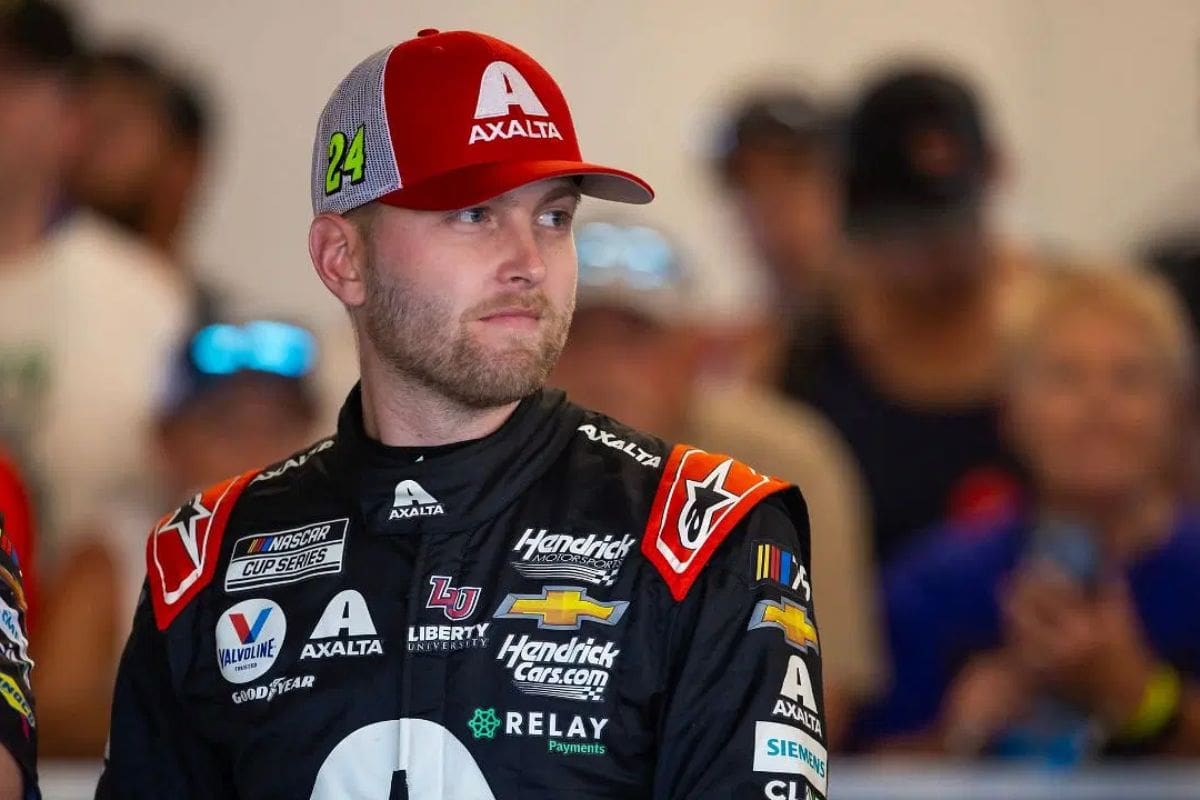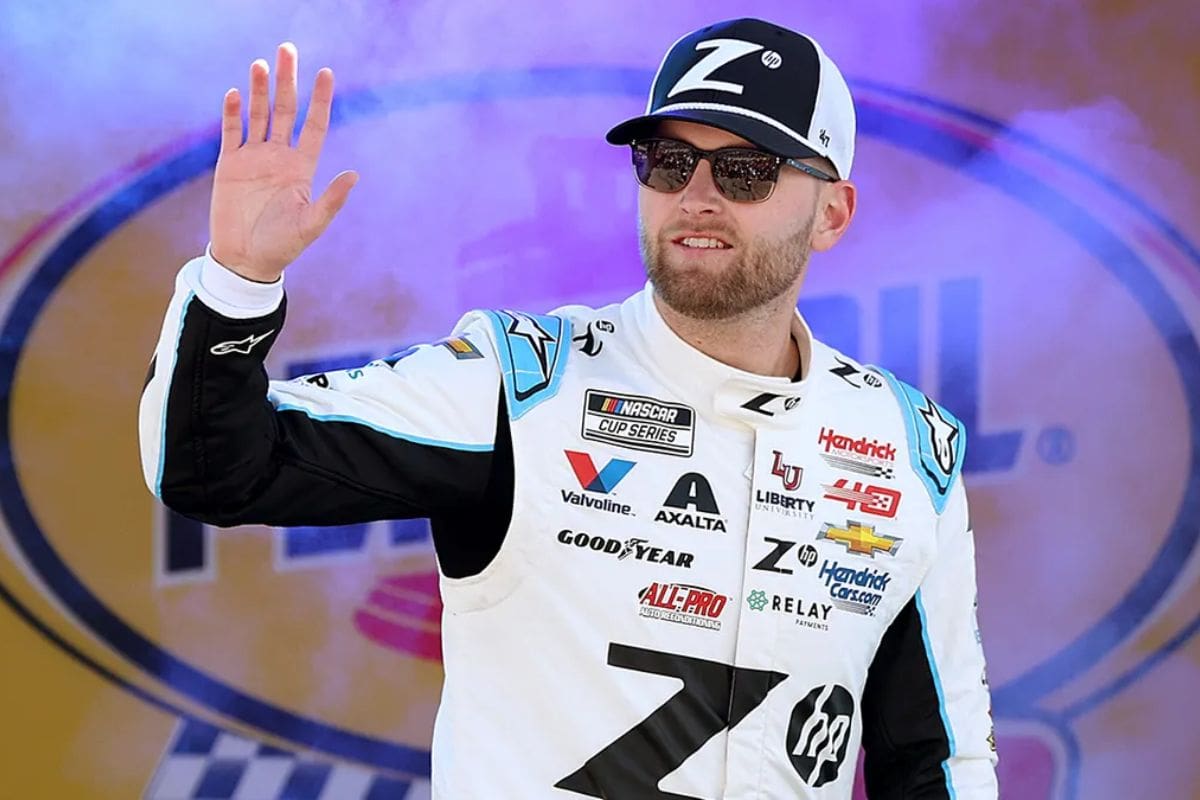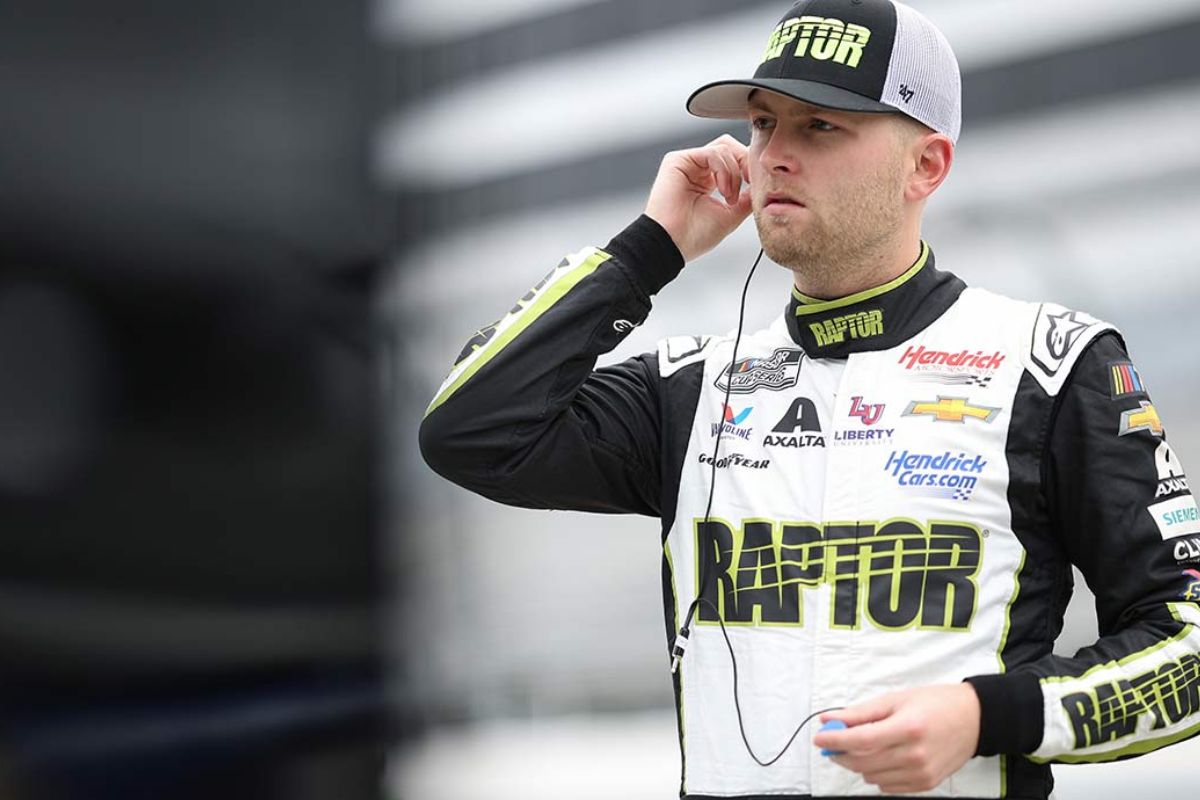William Byron’s Tactical Move: In NASCAR, where every second and strategic decision can pivot the race outcome, William Byron’s masterful execution of restarts stands as a testament to his analytical prowess and racing acumen. Amid the recent controversies over restart rule enforcement, Byron’s ability to blend aggression with tactical caution not only navigated him through potential pitfalls but also highlighted his championship caliber. His tactics, particularly at critical periods, not only command attention but invite a deeper exploration into the implications of such strategies on the broader competitive landscape. How does Byron’s approach redefine the restart, and what could this mean for the future of NASCAR strategy?
Key Takeaways
- William Byron strategically balanced aggression and caution during restarts, avoiding early acceleration controversies.
- His evolution post-Martinsville involved anticipating rivals’ actions, showcasing his adaptability in restart scenarios.
- Byron adhered strictly to NASCAR’s restart rules, steering clear of the inconsistency issues seen with other drivers.
- His tactical approach during restarts reflects a sophisticated understanding of NASCAR’s racing dynamics and rule enforcement.
- Byron’s victory at Martinsville, amidst restart drama, emphasized his skill in leveraging strategy for race wins.
Controversy at Richmond Raceway
The Richmond Raceway incident, where Denny Hamlin controversially initiated a premature restart, not only ignited controversy but also set an example for NASCAR’s enforcement of race restart rules. This situation unfolded during a critical stage in the race, with Hamlin leading alongside teammate Martin Truex Jr. As they approached the designated restart zone, Hamlin accelerated early, a tactic that did not go unnoticed by his peers or the keen eyes of spectators. Yet, despite the clear infringement and Hamlin’s own acknowledgment of the misstep, NASCAR officials chose not to penalize him. This decision, or lack thereof, has since rippled through the racing community, raising questions about the consistency and integrity of NASCAR’s rule enforcement.

William Byron’s Approach to Restarts
Mastering the intricate dynamics of NASCAR restarts, William Byron has adopted a strategic approach that emphasizes precision and caution, particularly in the wake of Denny Hamlin’s controversial move at Richmond. This methodical strategy reflects Byron’s deep understanding of the high stakes involved in restarts, where a split-second decision can dramatically alter the outcome of a race. By focusing on achieving a good launch without crossing the line into penalty territory, Byron demonstrates a blend of aggression and restraint, a balance critical to steering through NASCAR racing.
His approach to restarts, especially post-Martinsville, highlights an evolution in racecraft. Aware that his rivals are also aiming to capitalize on these critical moments without incurring penalties, Byron’s strategy is not just about avoiding mistakes himself but also anticipating the actions of others. This forward-thinking mindset is indicative of a driver not just reacting to the race but actively shaping its dynamics.
“I definitely think about it. Didn’t want to jump because I knew that I’d be the first example made. At the same time, just thinking about, how can I not spin my tires, get a good launch. I got an okay launch, got a look back at it. Felt like the guys around me – because knowing the restart zone, Being vulnerable, with what happened last week – they took advantage of that. They had a little bit better launch than me. It stinks that things like that happen, you have to kinda adjust, but that’s just the nature of competition. Felt like I still had a decent launch and still was able to get into 1 and 2 and have a decent restart.” – (Byron)
Byron’s Redemption at Martinsville
Bouncing back from a less-than-stellar performance at Richmond, William Byron clinched a pivotal victory at Martinsville, marking a significant moment in both his career and the legacy of Hendrick Motorsports. This victory was not just a redemption for Byron following a disappointing 7th place finish at Richmond but also a demonstration of his growth and strategic acumen on the track. Martinsville, with its unique demands and storied history, provided the perfect backdrop for Byron’s tactical prowess to shine, effectively turning the page from the previous week’s frustrations.
Analyzing Byron’s victory at Martinsville through a strategic lens reveals much about the evolution of his driving and decision-making skills. Unlike the high-speed, aerodynamic battles that characterize many of NASCAR’s oval tracks, Martinsville demands precision, patience, and an acute sense of timing, especially during restarts and tight cornering. Byron’s ability to navigate these challenges, coupled with his team’s strategic calls, highlighted a matured approach to racecraft that perhaps was less visible at Richmond.

Hendrick Motorsports’ Milestone Achievement
The significance of this particular win at Martinsville extends beyond the immediate celebration; it serves as a poignant reminder of Hendrick Motorsports’ dominant presence at this track and in NASCAR as a whole. Their remarkable win tally is not just a number but a story of enduring success, resilience, and an unyielding drive to excel. Each victory at Martinsville solidifies their status further as a formidable force, merging their legacy with NASCAR’s rich history.
Byron’s Title Contention and Career Milestones
With his latest triumph at Martinsville, William Byron has firmly positioned himself as a formidable contender for the NASCAR Cup Series championship, marking a significant milestone in his rapidly ascending career. His third win of the 2024 season, which also serves as his 13th career win in the series, not only amplifies his status as a serious contender but also highlights his growth and consistency in the sport. Byron’s ability to secure victories under high-pressure situations, like the intense battles often seen at Martinsville, speaks volumes about his tactical acumen and mental fortitude.
His success is not just a reflection of his driving prowess but also mirrors the strategic advantage provided by Hendrick Motorsports, a team known for its championship-caliber support and resources. As Byron continues to accumulate wins and build momentum, comparisons with some of the sport’s legends are becoming increasingly justified, suggesting that we might be witnessing the rise of NASCAR’s next superstar.

News in Brief
William Byron’s strategic mastery over NASCAR’s restart challenges highlights a significant evolution in racecraft, especially in maneuvering the intricacies of restart dynamics. His approach, balancing aggression with prudence, not only avoids the pitfalls of controversial restart rules but also positions him as a strong championship contender.
This development marks a crucial moment in Byron’s career, showcasing a synthesis of skill, tactical acumen, and adaptability, thereby solidifying his status within the upper ranks of motorsports excellence.
Our Reader’s Queries
Q: Has William Byron ever won a NASCAR race?
A: William Byron sealed a fairytale weekend for Hendrick Motorsports with a triumphant victory at Martinsville Speedway. Starting from the 18th position, Byron clinched his third win of the season, coinciding with Hendrick Motorsports’ commemoration of its 40th anniversary.
Q: Who is William Byron’s crew chief in NASCAR?
A: Ryan ‘Rudy’ Fugle has steered the #24 HMS Camaro alongside driver William Byron since 2021, fostering a formidable partnership. Their synergy was evident in the 2016 Truck Series season, clinching victory in seven races. Despite a setback preceding the Phoenix race, their achievements were commendable.
Q: How did William Byron get started racing?
A: Byron’s racing journey ignited at the age of six, sparked by a televised stock car race. Witnessing the thrill firsthand at Martinsville Speedway in 2006 further fueled his passion. As a teenager, he honed his skills on the iRacing simulator, amassing an impressive tally of over 100 wins and 298 top fives in online competitions.
Also Read: William Byron’s Surprising Confession: Anxiety Behind HMS’s Dominance

